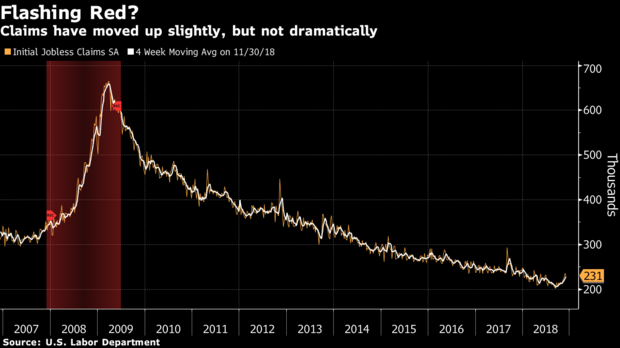2019 Employment is “All Good” (Until It Isn’t)

By all metrics, the projections for employment prospects in the coming New Year are excellent. Unemployment is at near-record lows. With hiring demand high and wages rising in response, hiring organizations are busily engaging practices and technologies to help increase access to in-demand talent amidst short supply of qualified candidates. Yet, at the risk of being a holiday “buzz kill,” we’re making a contrarian recommendation: be prepared for an unexpected and dramatic reversal of today’s robust labor landscape.
It is the coldest of comfort after any disaster to hear people say, “no one could have predicted this calamity.” Yet, as we all know, upheaval happens with startling regularity. This is why smart professionals make contingency plans for reversals of fortune during times when it seems most counter-intuitive to think about such things—when business is rocking.
Labor industry watchers, economists, and the US Dept of Labor all agree that 2019 will continue along the same economic vector we’ve experienced over the last few years. Yet, there are ominous portends on the horizon that could quickly change the business requirements from “how do we find untapped pools of viable talent” to “how do we streamline and optimize the contingent workforce in response to an unexpectedly shrinking (if not outright collapsing) economic picture?

The first step, in any such intervention, is to admit there is a problem. As of the writing of this post, the prevailing sentiment continues to be one of confidence in the status quo. But consider the following historical precedents for an economic reversal:
The Yield Curve Reverses | The “Yield Curve” is a stock market metric comparing rates on short-dated debt securities and those on longer-maturity bonds. Historically, when the gap narrows or inverts, a downturn usually follows.
Business Surveys Reveal Concern | JP Morgan’s recession-predicting index, while not yet fully supporting severe warning signs, does reflect a growing concern among business leaders that weakness is creeping into the economy. Business leaders are worried about (among other things) expected tightening of monetary policy (rising interest rates) by the Federal Reserve and the chilling effect higher borrowing costs can have on profitability.
Jobs Data | Perhaps the most relevant metric for our discussion is the recent uptick in weekly jobless claims. Bank of America economists remind us that preceding the last seven recessions, growth in the six-month rate of initial claims had doubled. While the current bounce is a modest one, the chart shows the context. There’s precious little room to drop (as today’s record low unemployment rates illustrate), but there’s plenty of room for claims to rise and we’re at the ebb of an especially long cycle.
Now is not a time to panic. However, it is the perfect time to make prudent preparations for the future which will eventually require adaptation to unexpected changes to conditions. It is our job at nextSource to help keep customers from being caught flat footed when an as-yet, unknown catalyst radically and instantly changes the nature of their labor plans. Because, the employment picture for 2019 will be very good only up until the point when it suddenly won’t be. Reach out to nextSource today for guidance in laying out a contingency plan for your contingent workforce.